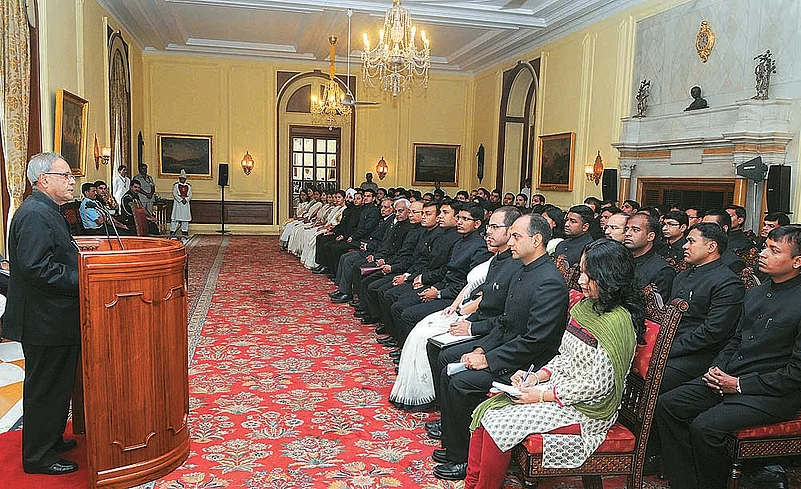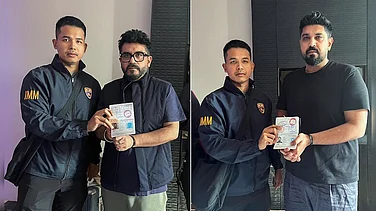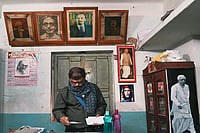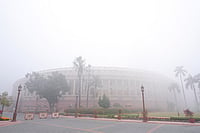Can India imagine its state capitals, districts and blocks without its IAS officers? Ramgopal Yadav, a Rajya Sabha member of the Samajwadi Party, has dared imagine this alternative universe. Not just that, Yadav has asserted that the “steel frame of India”, as the IAS has been described, should withdraw from Uttar Pradesh. “We will manage with our state service officers,” he says.
Yadav’s remark comes from the thick of battle, with the Samajwadi Party ranged against Durga Shakti Nagpal, a 28-year-old IAS officer who took on the sand-mining mafia and found herself transferred. But it’s tempting to take the remark seriously. The bureaucracy in Uttar Pradesh faces much political pressure, perhaps more than in any other state. A UNICEF-Planning Commission study in 2012 found that between 2001 and 2011, nearly half the district-level officials in Uttar Pradesh were transferred within a year. The study, which looked at 34 poor districts in seven states, including Jharkhand, Madhya Pradesh and Bihar, found that Uttar Pradesh’s poorest people faced a vacuum: one of every four district-level positions lay vacant. Transfer—or tabadla—tales are legion: upright officers are known to live out of suitcases, often facing near permanent separation from their spouses. Many choose stability and adapt. Bureaucrats whisper of a hafta system, a reference to both politically motivated transfers and the preferred weekly schedule for collecting bribes.
“The political class has subjugated the IAS. This is because politicians need civil servants to make money. They pick and choose the weakest. And Uttar Pradesh has the worst politicians in India,” says T.S.R. Subramanian, former Union cabinet secretary, also a former chief secretary of the state. Tired of its notoriety for underdevelopment, poverty and a well-fed political patronage system, in 1996 the state IAS association attempted a contentious clean-up that eventually proved disastrous. They voted to identify the three most corrupt bureaucrats among themselves, offering the administration details of their crimes. Over time, two, including Akhand Pratap Singh, became chief secretaries. The third died. Several former state or cadre officers, including Siddhartha Behura, Neera Yadav and B.S. Lalli, face serious charges.

In the Durga Shakti case, IAS officers have decided to rally behind the young officer. They say she is being victimised for doing an honest job. The Samajwadi Party has retorted by filing a list of allegations against
her almost immediately after she was suspended. “Until the charges are disposed of, her career will be in limbo,” says a senior IAS officer. “It’s as if different groups have their own stakes, and are exploiting her case for their own benefit.”
Dr Rajshekhar Vundru, an IAS officer of the Haryana cadre, says, “Young SDMs are generally not handed such tough action. They are never suspended. Suspensions are a new trend in UP since the last 10-15 years,” he says. “Her suspension is unwarranted. The IAS is bound by rules and procedures that need to be followed in line with constitutional principles.”
Uttar Pradesh has another weakness, albeit one that’s commonly encountered in many states: caste and political patronage move hand in hand. “There was a time when officers from outside the state were preferred. As chief minister, Charan Singh insisted on having ‘two Madrasis and two Punjabis’ to manage a severe drought,” says Jagdish Khattar, a former bureaucrat who was then serving in the state. He says the state has gone from bad to worse: “Political interference is always there but nothing like in UP today, where everything happens along caste lines.”
While the media is rallying around Nagpal, the ruling Samajwadi Party sees it as an opportunity to show off its “secular credentials”. It’s another matter that the district magistrate’s report supports Nagpal and rebuts claims of possible threats to peace. At the site of the mosque whose wall Napal got demolished and the illegal mining spots, peace prevails.
IAS officers are, meanwhile, trying to assert themselves. They are seeking a change of rules, with fixed tenures for particular positings, with minimum and maximum time prescriptions. Many seek changes in service rules to allow transparency. By the rule book, in several states, officers cannot be moved at whim. However, it does not work in practice. Even so, the IAS Association of Bihar wants more safeguards for all-India service officers. It has demanded revocation of Nagpal’s suspension. “If there is a substantive mistake, an inquiry is only to be expected, but suspension is too severe, especially for a young officer,” says Manoj Kumar Srivastava, a chief-secretary rank officer from Bihar.
There are few studies of the IAS and almost none on their conflicts with politicians. One, by Harvard Business School professor Lakshmi Iyer, found in 2009 that bureaucrats are significantly (10 per cent) likelier to be transferred when a new chief minister comes in. Such transfers are passed off as “routine”, when in fact they are intended to put favourites in key positions or put known dissidents out of action.
Similarly, former civil servant N.C. Saxena noted in a 2010 paper that the poor shape of India’s bureaucracy is linked to the country’s indifferent progress on millennium development goals. “There’s growing belief that the politician is working hand-in-glove with the bureaucrat. The politician is not trusted at all—that is why there is outrage in Durga Shakti’s case,” he says.
Poverty rates declined 0.9 per cent less in districts which had a 10 per cent higher probability of politically induced transfers, the Harvard Business School study found. That’s also why the IAS ranks are resistingthe Samajwadi Party’s argument that Durga’s is a “routine administrative transfer”.
Vundru says the IAS is still India’s steel frame. He, too, was once transferred five times in a short span for taking on the mining mafia in Haryana’s Mewat region. “However, I knew I’d be able to work in peace elsewhere. There was no brow-beating by politicians. What we don’t like in this (Nagpal) case is that the matter has not come to a rest even after the transfer,” he says.
Suspensions of IAS officers are not rare in Uttar Pradesh, regardless of regime, says Parthasarathy Sen Sharma, a UP cadre official who joined the IAS in 1994. “What’s different this time is that the case has caught the public imagination. I hope Durga Shakti is given a fair trial and reinstated soon,” he says.
The SP and Yadav may well imagine a state without the IAS but, as Subramanian points out, the service’s all-India nature has a logic: it’s also about national integration. But then things are always a little different in Uttar Pradesh.


























